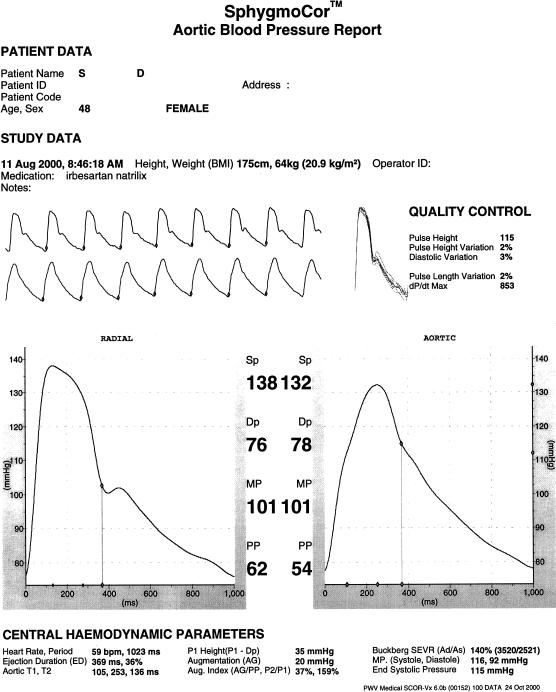Figure 1.
The Sphygmocardiograph: computerized report on analysis of radial artery and synthesized aortic pressure waves. A series of radial artery pressure waves, recorded over an 8 s period (upper continuous tracing) are used to synthesize a series of ascending aortic pressure waves (lower continuous trace) using a convolutional algorithm and a generalized transfer function which characterizes hydraulic properties of the upper limb vasculature. The radial waves are ensemble-averaged into a single wave (centre left), and the aortic waves into a single synthesized aortic wave (centre right), with the radial wave calibrated to brachial systolic and diastolic pressure, and integrated mean pressure taken to be identical at radial and aortic sites. Features of the waves (foot, shoulder, peak, incisura) are identified automatically using differentials, and flagged. The detailed report gives information relevant to ventricular/vascular interaction from both pressure and time values, as calculated from the synthesized aortic waveform.

